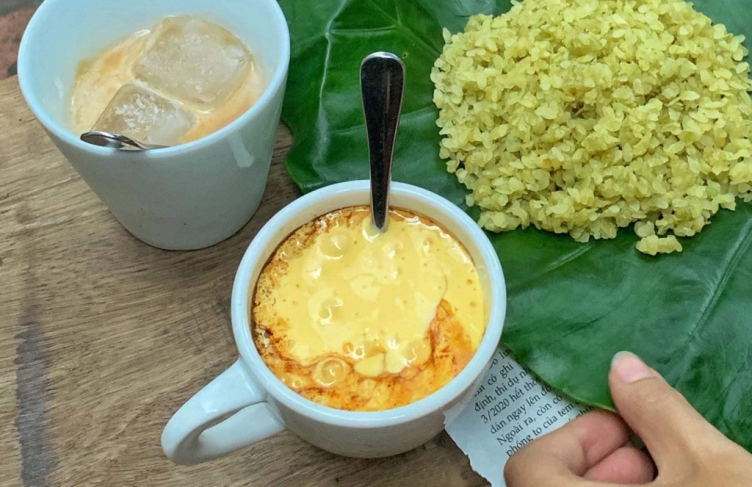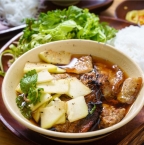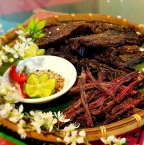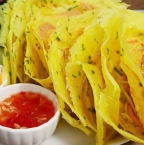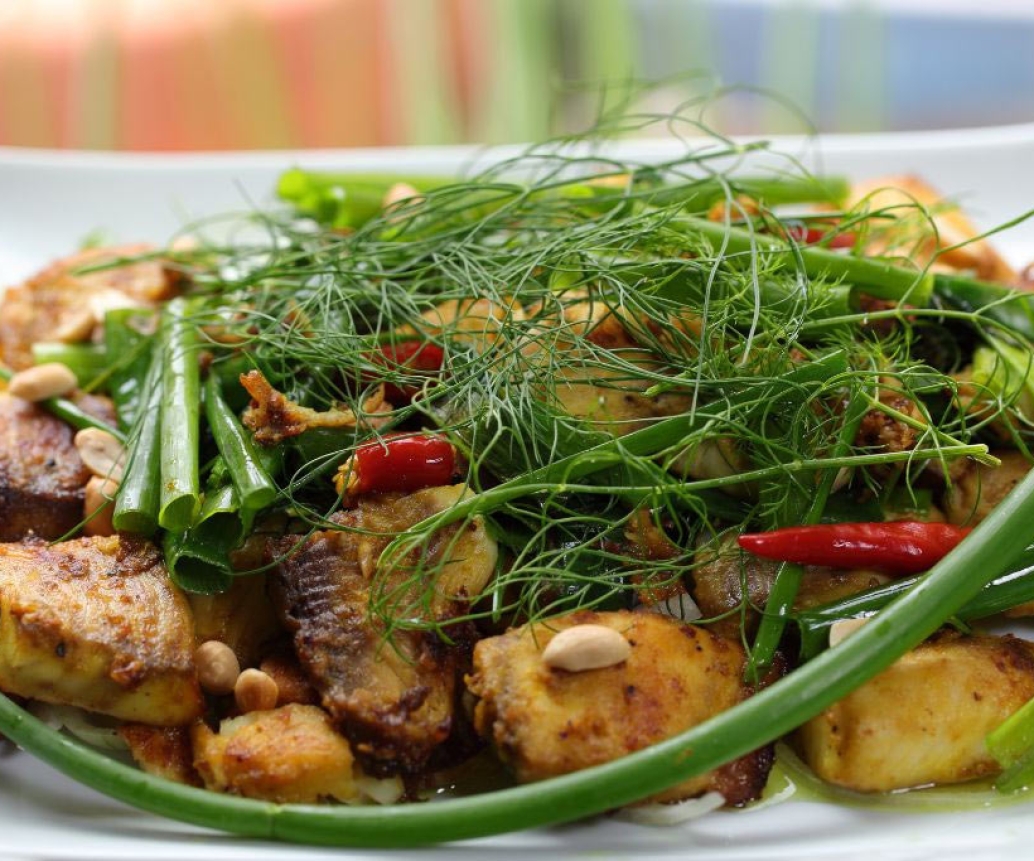
Top 5 Best Vietnamese Dishes In Winter
Indulge in the soul-warming flavors of Vietnam’s winter culinary delights, where every dish is a symphony of tastes and textures. As the temperatures drop, the Vietnamese embrace a rich tapestry of comforting and hearty dishes that reflect the vibrant cultural heritage of the nation. In this article, Hanoi Voyages will list the top 5 Vietnamese dishes in Winter that captivate the senses during the chilly winter months.
Table of Contents
Pho Ga – One of the most popular Vietnamese dishes in winter
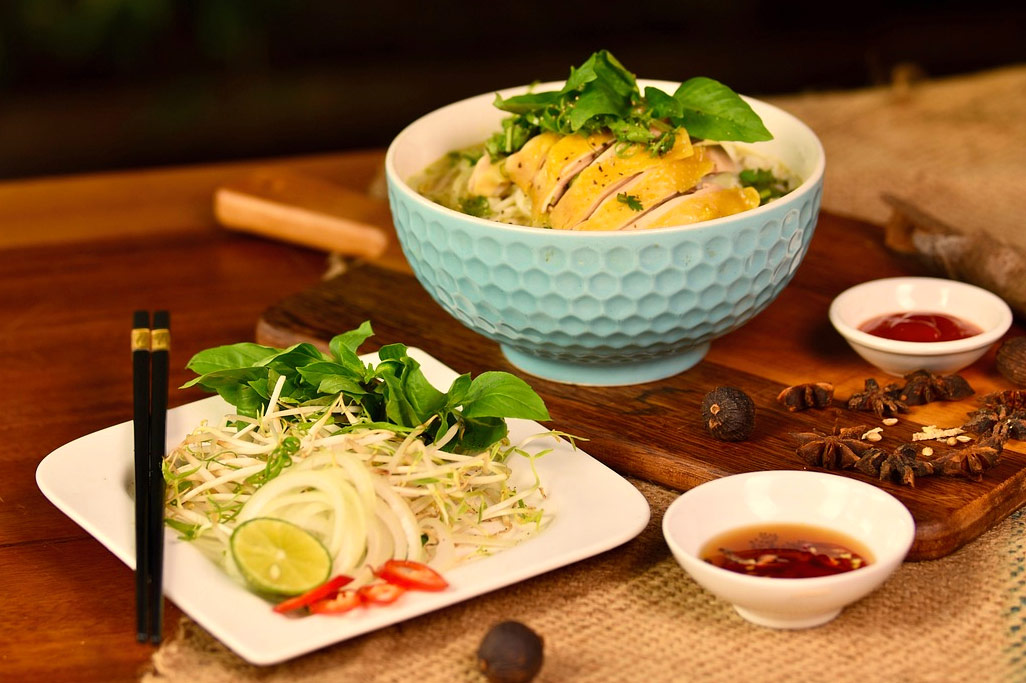
Pho Ga is a variation of the popular Vietnamese noodle soup called “Pho.” The origin of Pho itself is deeply rooted in Vietnamese cuisine history, and it is believed to have originated in the early 20th century in the Northern regions of Vietnam, particularly in and around Hanoi.
The specific origin of Pho Ga is not as well-documented as its Pho Bo. However, Pho Ga likely developed as a variation to cater to those who preferred or could only consume chicken instead of beef, for dietary, religious, or cultural reasons.
Pho Ga typically features a fragrant broth made by simmering chicken bones along with aromatic spices such as ginger, star anise, and cinnamon. The broth is then poured over rice noodles and shredded chicken, creating a comforting and flavorful soup. Like many traditional dishes, Pho Ga has evolved, and various regions in Vietnam may have their unique twists on the recipe.
In Vietnam cuisine culture, Pho has become a beloved and iconic dish, enjoyed across the country and around the world. Its popularity has led to numerous regional variations and adaptations, making it a versatile and widely appreciated comfort food. Are you ready to try the taste of Pho Ga – the taste of Winter Hanoi and one of the best dishes in Vietnam in Winter?
Bun Thang – The taste of Vietnam winter
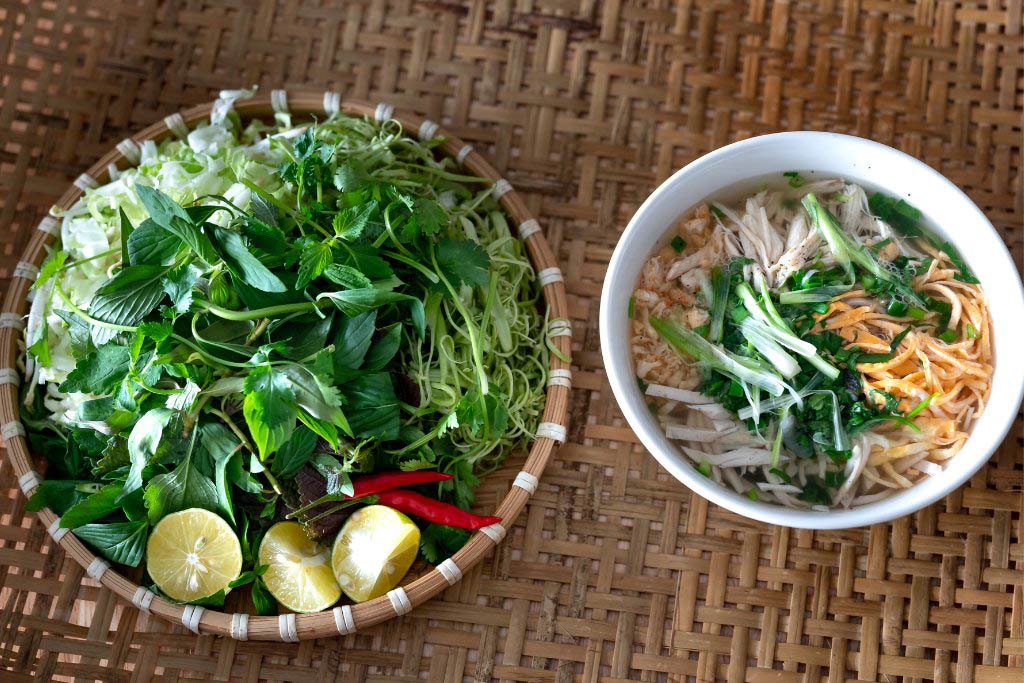
Bun Thang is a traditional Vietnamese noodle soup that is considered one of the best dishes in Vietnam in Winter and is particularly associated with Hanoi, the capital city of Vietnam. The dish has a long history and is often considered a culinary treasure that reflects the ingenuity of Vietnamese cuisine. While the exact origin of Bun Thang is not exactly documented, it is believed to have its roots in Hanoi and the Northern regions of Vietnam.
Regarding the name of this Vietnamese food, the name “Bun Thang” translates to “noodle soup of prosperity” in Vietnamese, and the dish is often associated with special occasions, particularly during Tet, the Vietnamese Lunar New Year. It is a celebratory dish that showcases the skillful artistry of Vietnamese chefs.
Bun Thang is known for its intricate preparation, featuring thin vermicelli noodles, a delicate broth, and a variety of colorful and finely sliced ingredients. The broth is typically made from chicken, pork, and dried shrimp, and it is seasoned with delicate herbs and spices. The key feature of Bun Thang is its assortment of toppings, including thinly sliced chicken, pork, Vietnamese ham (Gio Lua), omelet strips, wood ear mushrooms, and fresh herbs.
Legend has it that Bun Thang was created by resourceful home cooks who wanted to make the most of the leftover ingredients from Tet feasts, creating a dish that was both visually appealing and delicious. Over time, Bun Thang has become a beloved and iconic dish in Vietnamese cuisine, especially in the northern regions.
While its precise origin remains somewhat unclear, Bun Thang continues to be celebrated for its unique flavor profile, artful presentation, and association with festive occasions in Vietnamese culture.
Banh Xeo (Vietnamese pancake)
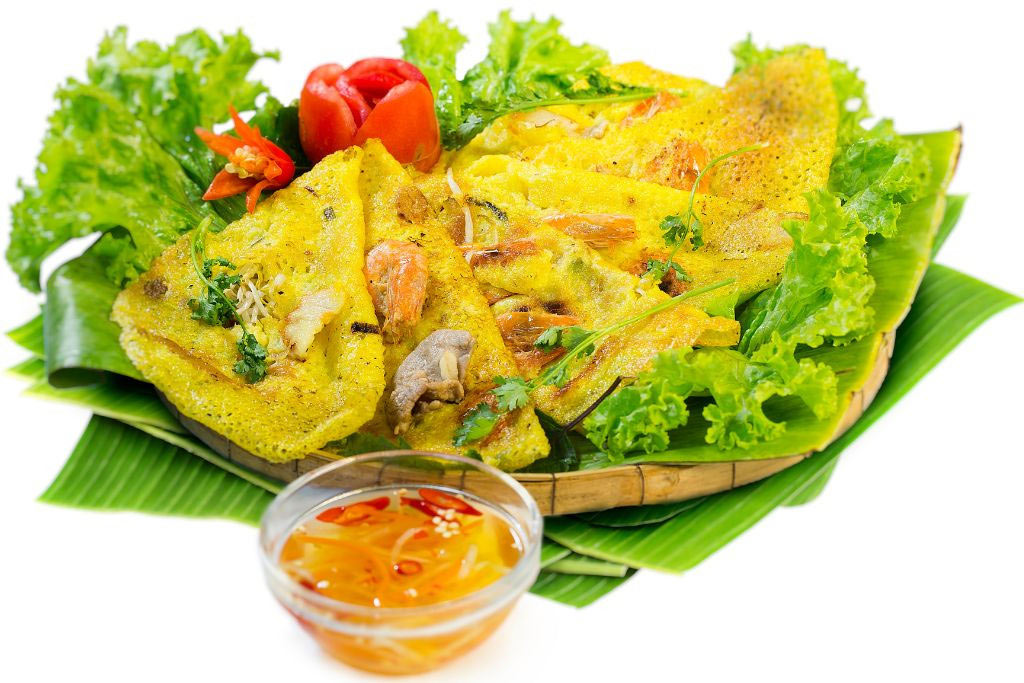
Banh Xeo is a Vietnamese dish that originated in Vietnam and has become popular both in the country and internationally. The name “Banh Xeo” translates to “sizzling cake” in English, which refers to the sound the rice batter makes when poured into a hot skillet. The dish is a type of savory Vietnamese pancake or crepe that is typically filled with a variety of ingredients.
The exact origin of Banh Xeo is not well-documented, but it is believed to have originated in Central Vietnam, particularly in the region of Hue. Over time, it has become a popular dish throughout the country, with different regions having their variations in terms of ingredients and preparation methods.
Banh Xeo is made using a batter consisting of rice flour, turmeric powder (which gives it a distinctive yellow color), coconut milk, and water. The batter is poured into a hot skillet, where it crisps up to form a thin, golden-brown pancake. Common fillings include shrimp, pork, bean sprouts, and mung beans. The pancake is usually folded in half before serving, and it is often accompanied by fresh herbs, lettuce, and a dipping sauce (“Nuoc Cham” in Vietnamese)
Banh Xeo is enjoyed as a popular street food in Vietnam and is also served in restaurants around the world where Vietnamese cuisine is featured. Its crispy texture, vibrant colors, and diverse flavors contribute to its widespread appeal.
Bun rieu – A Vietnamese dishes in winter not be missed
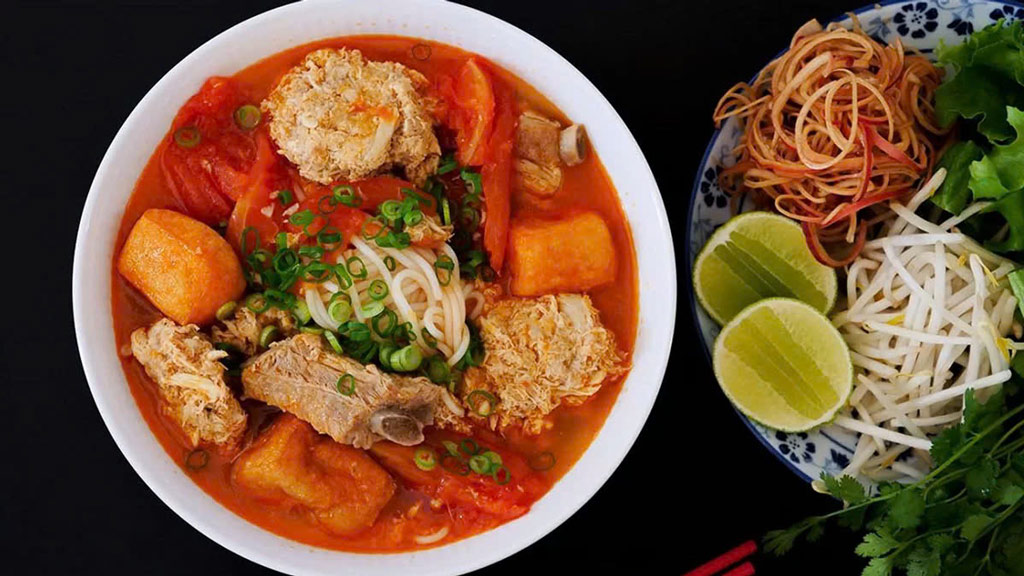
The origin of Bun Rieu, like many traditional dishes, is not precisely documented, and its roots are intertwined with the culinary history of Vietnam. However, Bun Rieu is believed to have originated in the North Vietnam area.
The dish has likely evolved as a result of local ingredients, regional preferences, and cultural influences. Bun Rieu is recognized for its distinct flavors, especially the use of crab or shrimp in the broth, which sets it apart from other Vietnamese noodle soups.
The name “Bun Rieu” translates to “noodles of crab” in Vietnamese, emphasizing the importance of crab in the dish. The broth is typically made from a combination of crab meat, tomatoes, and various aromatic herbs and spices. The use of fermented shrimp paste (mam tom) also contributes to the unique umami flavor of the broth.
Bun Rieu has gained popularity beyond Northern Vietnam and can be found throughout the country with regional variations. Different areas may have their interpretations of Bun Rieu, incorporating local ingredients and culinary traditions.
In the colder months, Bun Rieu takes center stage with its heartwarming broth made from crab, tomatoes, and aromatic herbs. Vermicelli noodles swim alongside tofu, crab meat, and a delicate crab and tomato-based broth. The result is a harmonious blend of sweet, savory, and tangy notes that will leave you craving more.
Cha ca La Vong – The taste of Vietnam in winter
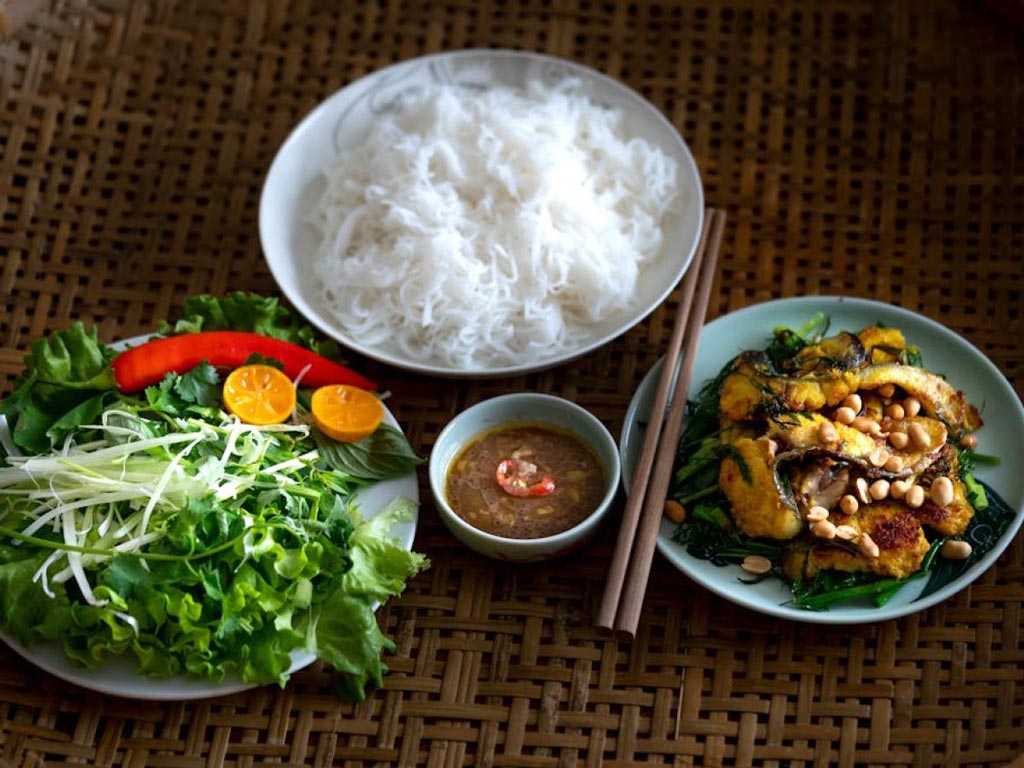
The origin of Cha ca La Vong is closely tied to a specific restaurant in Hanoi, Vietnam, called “Cha Ca La Vong.” The dish is believed to have originated in the early 20th century, and the restaurant itself claims to have been serving this unique grilled fish dish for over a hundred years.
The story goes that the dish was created by the Doan family, who ran a restaurant on Cha Ca Street in the Old Quarter of Hanoi. The dish gained popularity and became known as “Cha Ca La Vong” after the street name. Over the years, the restaurant, now simply called Cha Ca La Vong, has become an institution and is considered one of the oldest eateries in Hanoi.
The restaurant’s fame grew not only for the delicious grilled fish but also for the unique way it was prepared and served. Diners would sit around a communal table with a sizzling hot pot or skillet in the center, and the fish would be grilled right at the table. The distinctive flavors of the dish, including turmeric, galangal, and dill, along with the interactive cooking process, contributed to its allure.
While Cha Ca La Vong restaurant claims to be the originator of the dish, the exact historical details can sometimes be challenging to verify. Nevertheless, Cha Ca La Vong has become a symbol of Hanoi’s culinary culture, and the restaurant continues to attract locals and tourists alike who seek to experience this traditional and flavorful Vietnamese dish in an authentic setting.
Are you ready to try the taste of Cha ca La Vong – the taste of Hanoi Winter and one of the best Vietnamese Dishes in Winter?
Vietnam in Winter has many delicious traditional cakes which we cannot list all in this article. Contact us soon to get more details about your Vietnam tour, Hanoi Voyages wishes you a safe and enjoyable trip!










